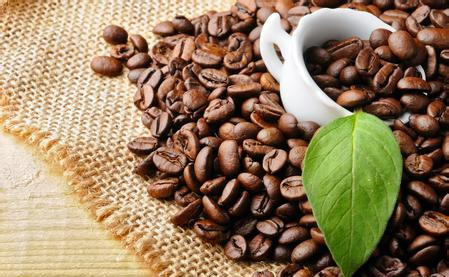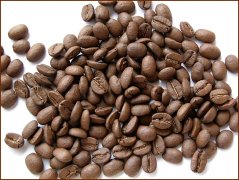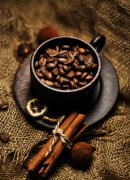Detailed rules for the examination of roasted Coffee production license

Detailed rules for the examination of roasted Coffee production license
Index number: 530800-006275-20081230-0009
Publisher: Pu'er Curry Association
Post date: 2008-03-25
Detailed rules for the examination of roasted coffee production license
Key words: detailed rules for the examination of roasted coffee production license
I. scope of license-issuing products and application units
Roasted coffee with the implementation of food production license management refers to the food made from coffee beans through cleaning, blending, roasting, cooling, grinding and other processes. Including: roasted coffee beans, coffee powder. The application unit is 1, that is, roasted coffee.
The name of the certified product, that is, roasted coffee, shall be indicated on the production license. The production license is valid for 3 years and its product category number is 2101.
Basic production process and key control links
(1) basic production process.
1. Roasted coffee beans
Clean up → provisioning → roasting → cooling → packaging
2. Coffee powder
Cleaning → blending → roasting → cooling → Grinding Powder → Packaging
(2) key control links.
1. Coffee beans in the roasting process of time and temperature control.
2. Selection of packaging materials and control of packaging process.
(3) quality and safety problems that are easy to occur.
1. The unreasonable setting of time and temperature during coffee roasting led to the decline of quality index.
2. Improper storage and packaging of products lead to the decline of coffee flavor and unpleasant smell.
3. Necessary production resources
(1) place of production.
Roasted coffee production enterprises must not only have the necessary production environment, but also have raw and auxiliary materials warehouse, production workshop, finished product warehouse and inspection room suitable for enterprise production. The processing room and packaging room in the production workshop should be isolated (only applicable to the production process where the processing and packaging process is not continuous or the production is continuous but the packaging is carried out under non-airtight conditions).
(2) necessary production equipment.
1. Screening equipment; 2. Baking and cooling equipment; 3. Grinding equipment (for coffee powder only); 4. Packaging equipment (sealing machine, production date filling device, measuring and weighing device, etc.).
The sub-packing enterprise shall have grinding equipment (applicable to crushing process requirements) and packaging equipment (sealing machine, production date filling device, weighing device, etc.).
IV. Product related standards
NY/T 605-2002 "roasted coffee beans"; valid enterprise standards for filing.
V. relevant requirements for raw and auxiliary materials
The coffee beans that enterprises produce roasted coffee should comply with the regulations of NY/T604-2002 "raw coffee". Raw and auxiliary materials and packaging materials must comply with the corresponding standards and relevant regulations. Those that do not meet the quality and health requirements shall not be put into production. If the raw and auxiliary materials used are the products under the management of the production license, the products produced by the enterprise with the production license must be selected.
VI. Necessary ex-factory inspection equipment
(1) Analytical balance (0.1mg); (2) drying oven.
VII. Inspection items
The certification inspection, supervision inspection and ex-factory inspection items of roasted coffee shall be carried out according to the inspection items listed in the table. If the factory inspection items are marked with "*", the enterprise shall inspect them four times a year.
List of quality inspection items for roasted coffee products
Serial number
Inspection item
Issue a certificate
Supervise
Leave the factory
Remarks
1
Appearance and sensory properties
√
√
√
2
Net content
√
3
Moisture content
√
√
√
four
Caffeine
√
√
*
five
Arsenic (in As)
√
√
*
six
Lead (in Pb)
√
√
*
seven
Copper (in Cu)
√
√
*
eight
Six, six, six.
√
√
*
nine
DDT
√
√
*
ten
Pathogenic bacteria (staphylococci, Shigella, salmonella, hemolytic streptococci)
√
√
*
eleven
Packing
√
√
√
twelve
Label
√
√
VIII. Sampling methods
Sampling is carried out according to the variety of products applied for certification by the enterprise, and a kind of leading product of the enterprise is randomly selected from the finished product warehouse of the enterprise for inspection. If the enterprise applies for two kinds of products, take out the coffee powder for certification inspection. The samples taken must be qualified products within the same production date and shelf life. 4 pieces of each product are randomly selected, the total amount of samples shall not be less than 800 grams, and the base number of samples shall not be less than 200 pieces.
The above samples are divided into two parts, one for inspection and one for reference. After the sample is confirmed to be correct, the sampling personnel of the verification team and the sampled unit shall sign, seal, seal the sample on the spot and affix a seal. The seal shall bear the signature of the sampled personnel, the seal of the sampling unit and the date of sealing the sample.
IX. Other requirements
1. This kind of products are allowed to be repackaged.
two。 The certification inspection, supervision inspection and ex-factory inspection items and inspection methods of coffee powder shall be carried out according to roasted coffee beans.
Pu'er Coffee Industry Federation March 25, 2008
Important Notice :
前街咖啡 FrontStreet Coffee has moved to new addredd:
FrontStreet Coffee Address: 315,Donghua East Road,GuangZhou
Tel:020 38364473
- Prev

Picture of lightly roasted coffee beans (Light Roast)
1. Picture of lightly roasted coffee beans (Light Roast)
- Next

The most important step that affects the flavor of coffee is the method of baking.
The most important step that affects the flavor of coffee is the method of baking. There are many factors that affect baking, such as climate, humidity, hardness and water content of raw beans. Because there are so many variables, baking experience is the most important key. Before roasting, raw coffee beans have a fishy smell, and after baking, they will emit a strong aroma. And the roasting degree of coffee beans (roas)
Related
- Beginners will see the "Coffee pull flower" guide!
- What is the difference between ice blog purified milk and ordinary milk coffee?
- Why is the Philippines the largest producer of crops in Liberia?
- For coffee extraction, should the fine powder be retained?
- How does extracted espresso fill pressed powder? How much strength does it take to press the powder?
- How to make jasmine cold extract coffee? Is the jasmine + latte good?
- Will this little toy really make the coffee taste better? How does Lily Drip affect coffee extraction?
- Will the action of slapping the filter cup also affect coffee extraction?
- What's the difference between powder-to-water ratio and powder-to-liquid ratio?
- What is the Ethiopian local species? What does it have to do with Heirloom native species?

